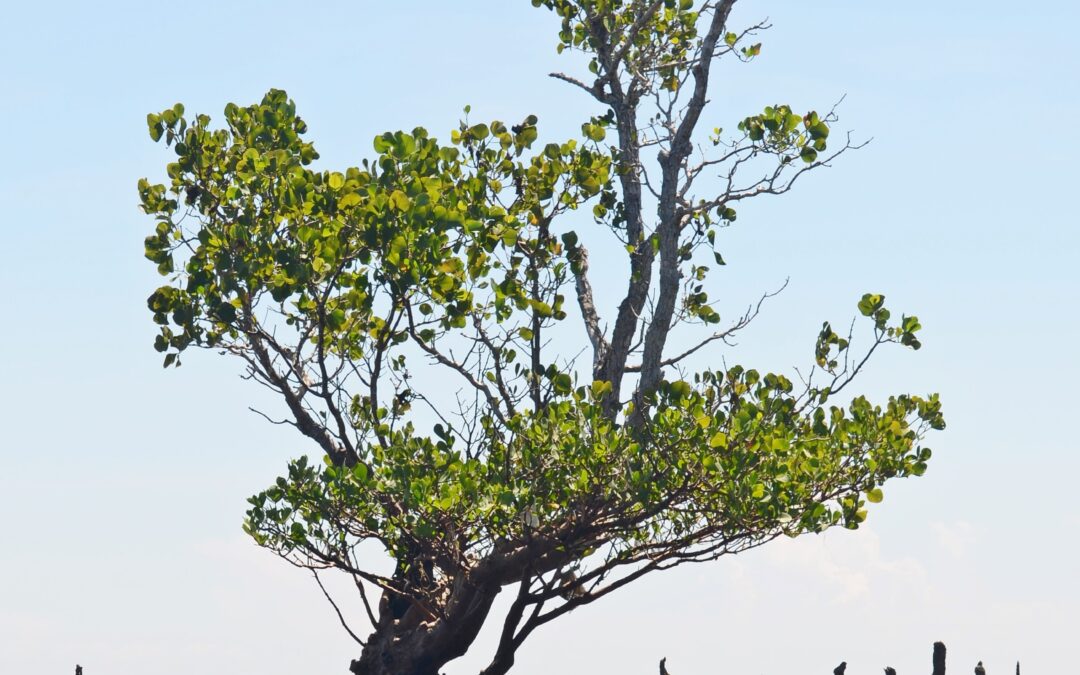Intertidal trees are not dispersed by animals because palatable fruit-pulp depends on potassium, a nutrient outweighed by sodium at the tideline.

Prof. Mumblebard claims: “Mangroves are dispersed by flotation because they need to be sown in the intertidal zone, an unlikely destination for seeds carried in the guts of fruit-eating animals. These trees lack succulent fruit-pulp palatable to animals because the families are specialised to have buoyant diaspores with, in the case of several genera, precocious germination which is incompatible with surviving the digestion of the dispersal agent.”
Robin and the Honey Badger respond: “Most families of mangroves are unspecialised enough to contain non-mangrove genera producing fleshy, animal-dispersed diaspores in other vegetation types. So the evolution of dispersal by animals is theoretically possible among mangroves. And flotation of fruits need not exclude either precocious germination or dispersal and sowing by fruit-eating animals. For example, many species of trees in Amazonian flooded forest have palatable diaspores similar to the bird-dispersed fruits typical of tropical rainforests, and are dispersed and sown by fishes instead of birds. The real reason lies in the nutritional imbalance typical of intertidal forests. Fruit-pulp which ripens to a succulent texture is typically rich in potassium while being poor in all other nutrients. Because the potassium is necessarily lost to the plant during dispersal, it follows that plants tend to evolve for dispersal in the guts of animals in environments where potassium is particularly freely available relative to other nutrients. In those environments where the supply of potassium remains in equilibrium or in short supply, it tends to be allocated to essential functions such as the growth of foliage and flowers and seeds. Sea water and mangrove muds are rich in potassium but tend to be disproportionately rich in other elements including sodium, which is not only toxic for plants but tends to be antagonistic to potassium owing to their chemical similarity. Although halophytic plants achieve succulence, no halophyte has succulent fruits in which sodium substitutes for potassium in maintaining turgor or nourishing fruit-eaters. Furthermore, the absorption of potassium is not passive but depends on metabolic activity in the roots, and this is constrained in the anoxic, waterlogged muds inhabited by mangroves. As a result, intertidal plants are frugal with potassium, avoiding the use of ripe fruits attractive to fruit-eating animals, and instead tending to rely on flotation exclusively.”

Please join us here at the Bio-edge with your own comments. In the discussion below we encourage links to any evidence supporting either Prof. Mumblebard or Robin and the Honey Badger. Illustrations are welcome but please cite all sources or we may be forced under copyright to delete your comment.
***
Featured image: A mangrove tree in the family Lythraceae by Ariefrahman (CC BY-SA 4.0, Mangrove)

